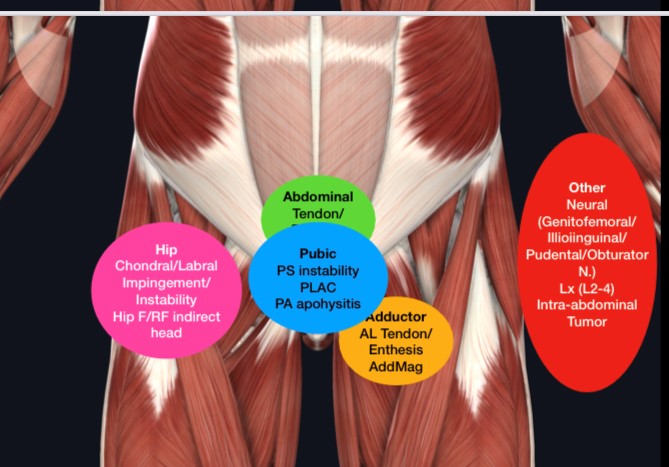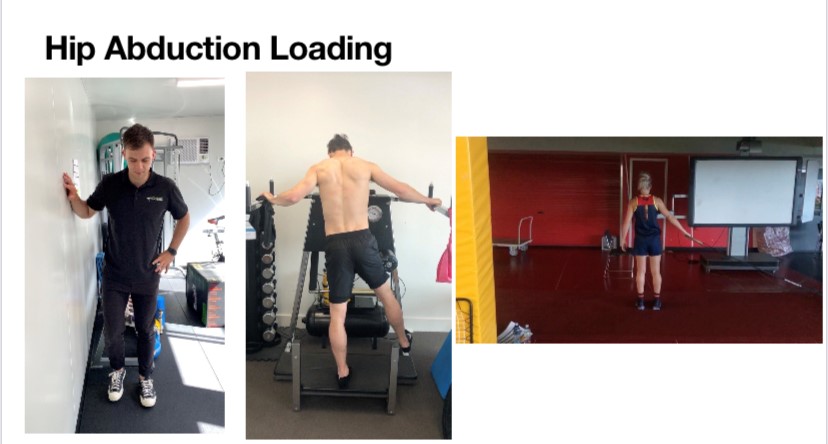Groin pain is common in kicking and evasion sports such as Australian football, Soccer and rugby. Previously known as ‘osteitis pubis’ it can be a challenging injury for both athletes and medical teams to manage.
A thorough understanding of the anatomy, biomechanics and function is required to manage these injuries effectively.
Anatomy
10 different muscles attach to the pubic bone. Traditional anatomy textbooks show these as having distinct separate attachments, however recent research has shown that the reality is that they are much more interlinked than previously thought.
The adductor muscles can connect with the abdominal/trunk muscles, opposite obliques and even the opposite adductor muscles. There is also considerable variation amongst people. One person might have an intertwined anatomy whilst another can have no intertwining at all.

Function
The adductor muscles have many important roles. They work to move the leg towards the body (hip adduction) especially with change of direction and agility movements. They also work hard to spring the leg forward (hip flexion) when running and kicking. This complex dual role is thought to be why groin pain is commonly seen sports that require evasion and kicking such as Australian Football, soccer and rugby.
Rehab
Recovering from groin pain takes a detailed assessment to understand what areas of the body are contributing to overload at the front of the pelvis. For some it may be that the groin muscles are not strong enough for the job. For others, the adductor muscles can be considerably strong, and instead other muscles around the body such as the calf, abdominals or hip flexors aren’t doing their job causing the adductor muscles to pick-up the slack and get overloaded.
Once a detailed assessment has taken place to understand what is happening, a sports physiotherapist is then able to put prescribe exercise programs to help improve the balance and strength across the body. Whether this can be done whilst continuing to train and play with modified loads or for if time away from sport is needed will depend athlete to athlete.
What is clear is, that there is no one-size fits all approach for athletic groin pain and a thorough understanding of the anatomy, function and individual is key for a successful rehab.

Alex McVeigh is a Sports Physiotherapist at Complete Balance Physio. He is also the Head Physiotherapist for the Hawthorn Hawks AFLW team.
